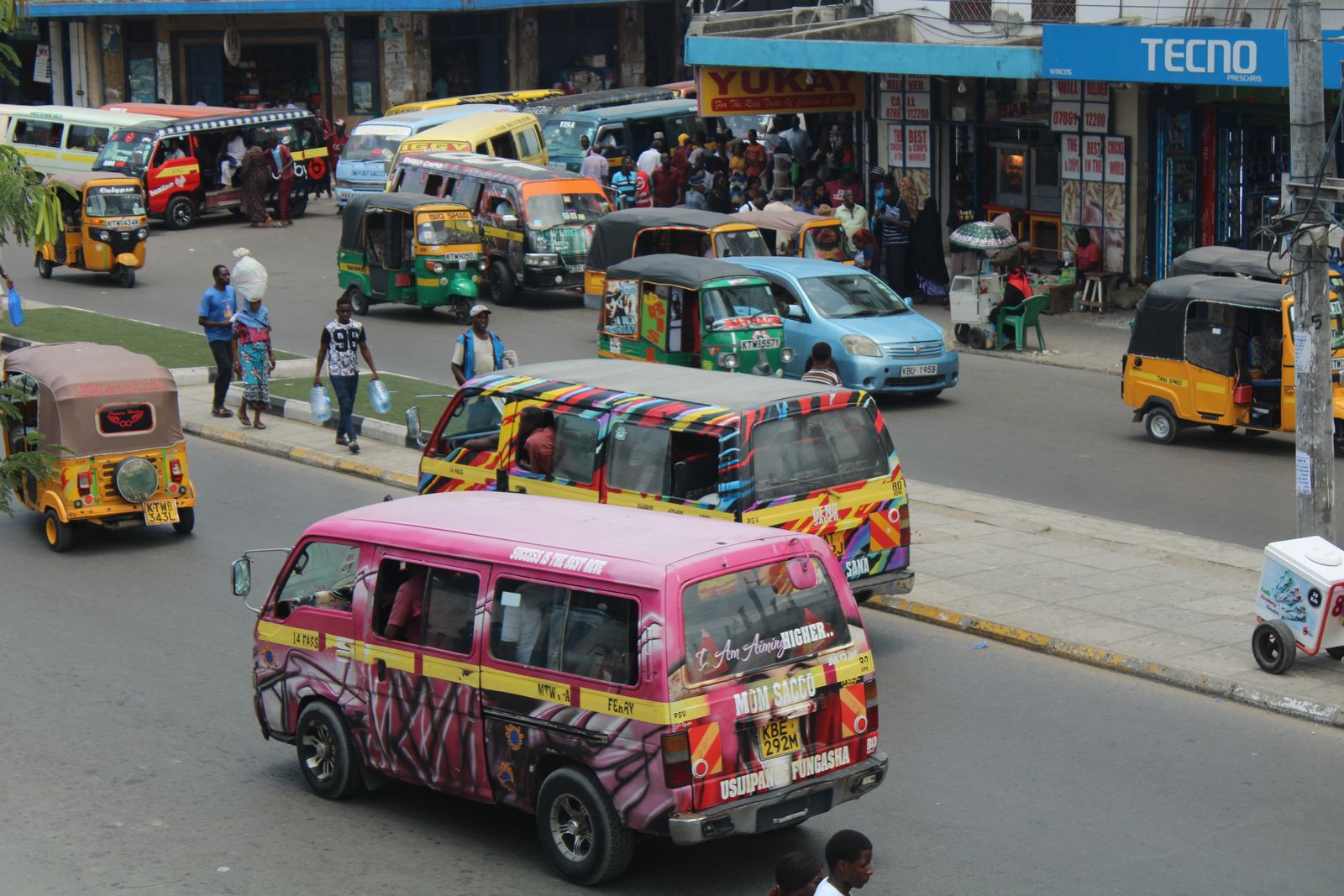Two years after Kenya’s National Transport Safety Authority introduced a cashless, or ‘cash-lite’ payment system for public transport, this initiative appears to have failed, following slow uptake of prepaid cards by commuters and resistance from Public Service Vehicle operators.
The ticketing technology was meant to ensure accountability and safety in the transport sector by removing the need for passengers to carry cash. Additionally, with proper records on how much money the PSVs collected, the Government would be able to tax the income earned from public transport more efficiently.
Kenya’s public transport sector is operated through SACCOs, and the complex ownership structure where vehicles are owned and operated by private individuals means that the system lacks a proper regulatory framework and formal systems for tracking revenues. Streamlining the payment collection system would also protect customers from price shocks, as matatu operators have been known to double or even triple their fares in the event of heavy traffic. The lack of a reporting mechanism also makes it difficult for the Kenya Revenue Authority to tax PSV operators.
Electronic ticketing was therefore seen as not only the solution to implementing tax collection by the government, but also as a means to enhance convenience and security among commuters who use public means of transport.
The government had banned the use of cash in public transport fare payments, with a deadline for the adoption of the system set for July 2015. This deadline passed without much movement in the way of adopting the new technology, so it was shifted to December 2015. However, the technology still failed to take off, with the routes that had implemented the use of electronic ticketing gradually resorting to using cash in the end.
A number of companies introduced cards that could be loaded with cash in order to pay for transport by commuters in the wake of the announcement of the shift from cash to cashless payment by the Ministry of Transport and Infrastructure.
Google was the first mover in the space, launching Bebapay in partnership with Equity Bank. PesaPrint entered the fray with the Metro Card, Kenya Bus introduced its Abiria Card and the Safaricom-backed My 1963 card was also launched with much fanfare.
PSV operators also formed their own company, Pamoja Ltd, and partnered with Diamond Trust Bank to implement their own system of cards and payment terminals.
Despite the investment that went into the initiative, reception by the public was lukewarm, with some questioning the need to add an extra layer on top of a system that, for all intents and purposes worked perfectly well.
The cashless experiment was doomed by a failure in User Experience design. From the onset, this programme was designed to solve a problem that did not really exist. The public transport system in Kenya is only public in the sense that anyone can use it.
Unlike other countries where the Government has a hand in mass transit, Kenya’s public transit system is largely in private hands. As a result, it is self-regulating and self-sustaining, with the Government only coming in for oversight. The cashless system would open up the industry to taxation while removing their ability to arbitrarily change fares.
According to the Matatu Owners Association (MOA) there are 80,000 PSVs on different routes in Nairobi. The vehicles make up to KES 500 million (US$50,000) per day in revenues, or about KES182.5 billion (US$1.8 billion) annually.
The Kenya Revenue Authority collects advance tax from PSV operators, who pay different rates depending on the capacity of their respective vehicles.
According to the advance tax rule, a 41-seater vehicle pays Sh. 29,520 (US$ 288), a 33-seater pays KES23,760 (US$220), a 26-seater pays KES18,720 (US$170) and a 14-seater pays KES10,080 (US$99) per year.
In effect, this is the only payment that PSVs pay to the Government, meaning that their revenues are often untaxed. The arrangement makes it difficult for the government to tax the revenue generated from the public transport sector, as the law ties payments made to the capacity of the vehicle and not the revenue it generates.
Unlike electronic ticketing which reflects all the payments made by the commuter to the vehicles they use, cash payments are much more fluid, and operators tend to keep what they make under wraps, thus making it an uphill task by the government to keep tabs on how much they make.
The ticketing system came with a portable receipt printer which produced the receipt automatically once the commuter has made their payments. This kept track of the payments made, and how much the PSV owner would have to pay in taxes. The data would be easy to verify, as each payment could be tracked to the card that was used. The receipts also had the details of the vehicle route and registration numbers, the name of the supervisor and details of the card used to make the payment.
Why the ticketing technology met resistance from stakeholders
The main argument put forward by the Government in favour of the cashless system is that cash payments are much less secure than direct debit, and the taxes generated from the system would have been ploughed back into making public transport sector much more streamlined. Public transport stakeholders were however unwilling to embrace the new technology.
In addition to the poor user experience design, a number of factors have played a role in the downfall of the new system.
- Performance-based income by Matatu crews - If the cashless method were to be implemented fully, matatu crews would essentially lose the benefits of a performance based income which maximizes their pay in terms of the numbers of routes they operate in a day.
- Fare volatility - Commuters are charged highly variable fares depending on a number of factor that range from weather to time, for instance during rush hours and rainy weather, matatus would game the system and charge double the fare, leaving commuters with no option but to comply due to artificial scarcity.
The cards would limit such loopholes, as fares would be fixed beforehand according to distance. As a result, matatu crews were unwilling to adopt the new technology, which required them to buy in before it would really take off. The strategy of artificial scarcity brought in profits during rainy weather and rush hour, and this money would go to the drivers and their conductors.
The cashless system also failed to take into account the arrangement that the PSV owners have with their crews, where they would get a fixed agreed amount on daily basis. With passengers using the card to pay, the matatu crews would be denied an income. As a result, the electronic system was met with strikes and go-slows from matatu crews, whose buy-in was required in order for the implementation to succeed.
- Commission charged by banks - NTSA blames the non-implementation of the ticketing technology to the high rates charged by the banks which partners with the companies offering the electronic cards used by commuters. The banks charge 5 per cent commission in addition to KES10,000 (US$98) as the cost of the card readers, which puts off potential investors who find it expensive to operate considering the technology is yet to taken off.
- Unwillingness to share the platform - A cashless payment has seen an increase in the number of players positioning to cash in on the cashless fare system and competition is rife in the PSV payments industry. This competition threatens existing profit structures as each company offering card services is distinct in terms of their services and the partners they enter into agreement with. This makes it difficult to implement the system as there is no uniformity going forward.
- Traffic officers and other interested parties - Public transport vehicles are popular among traffic police officers who regularly target them for bribes. Transport cards would render these vehicles cashless and hence no bribes to the ever present traffic officers on highways. The traffic officers would therefore be motivated to derail the system in order to secure their illicit income.
In this context, it is therefore not surprising that the uptake of electronic ticketing has failed to take off. Despite the convenience it brings to the commuters, the system has a critical design flaw - it could not work considering the power structures that exist around the public transport system. In order to succeed, any changes to the existing public transport system would need to take all these things into consideration, ensuring that it has buy-in from the industry as well as regulators. That way, Kenya's public transport sector could become more transparent, and all the stakeholders are more likely to benefit from it.
— By Kenneth Odero







